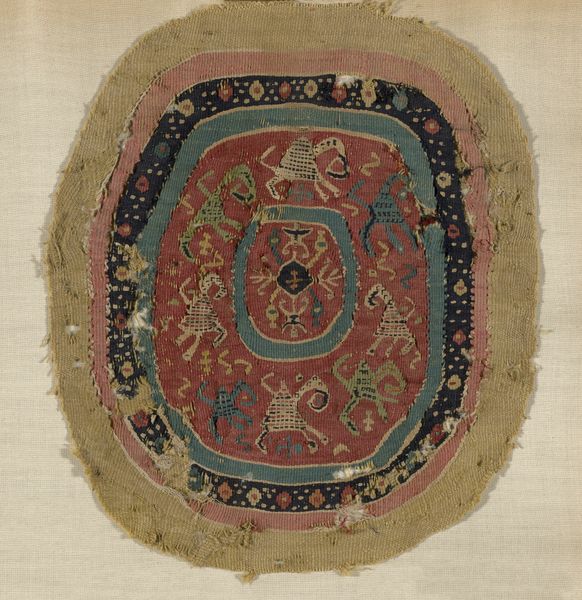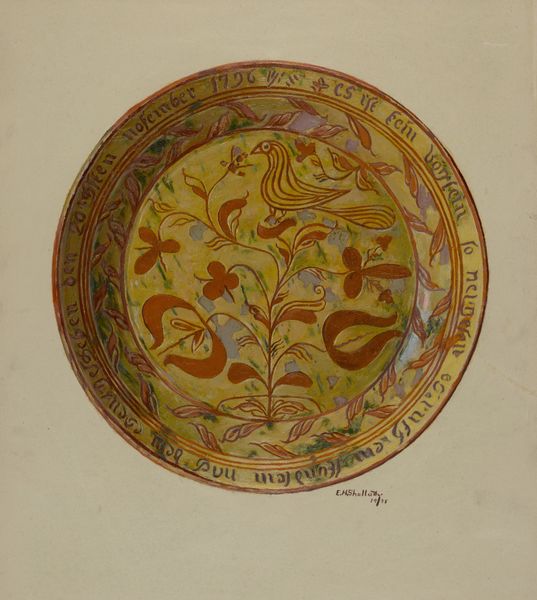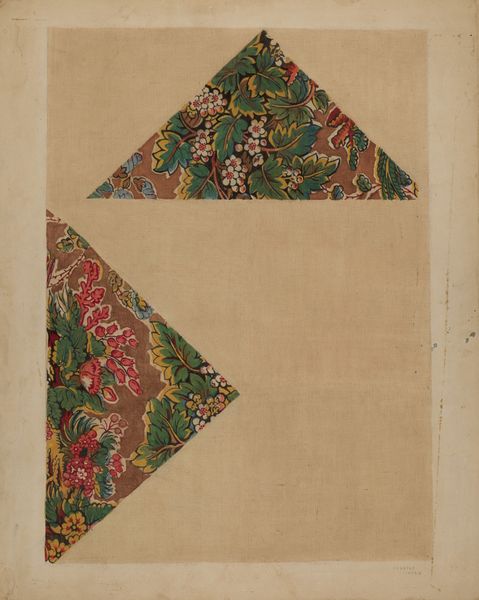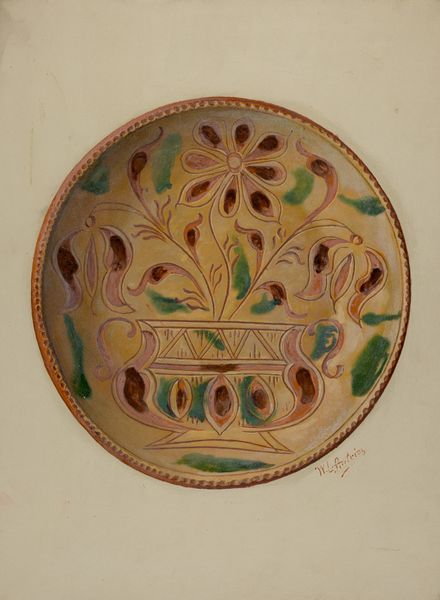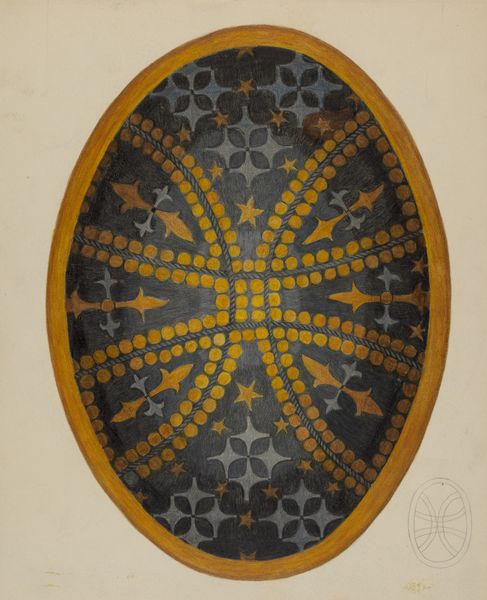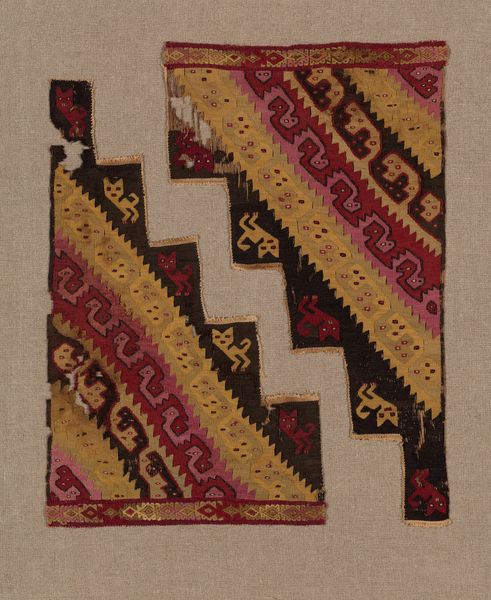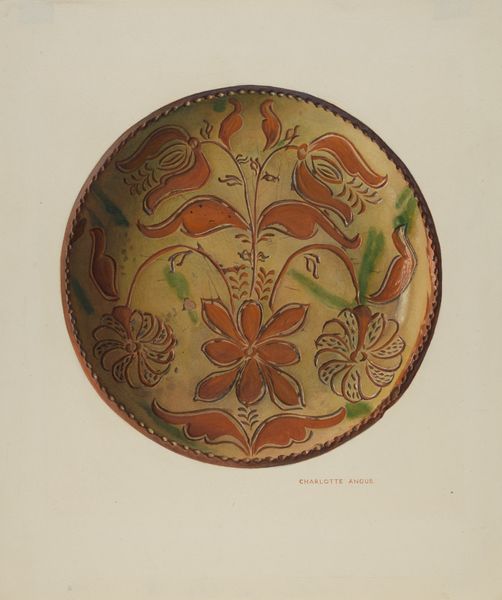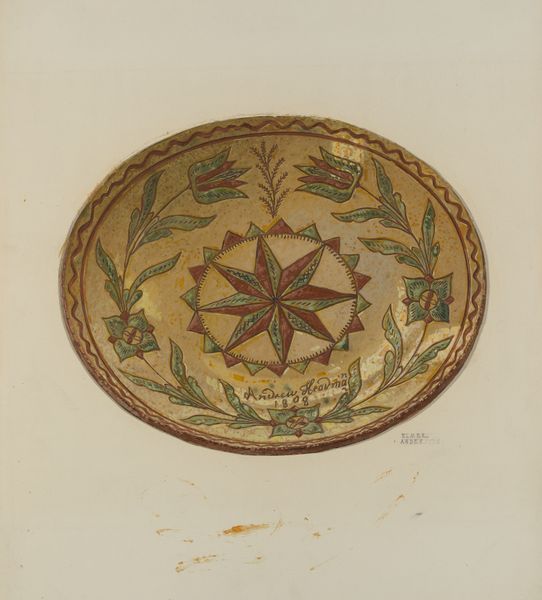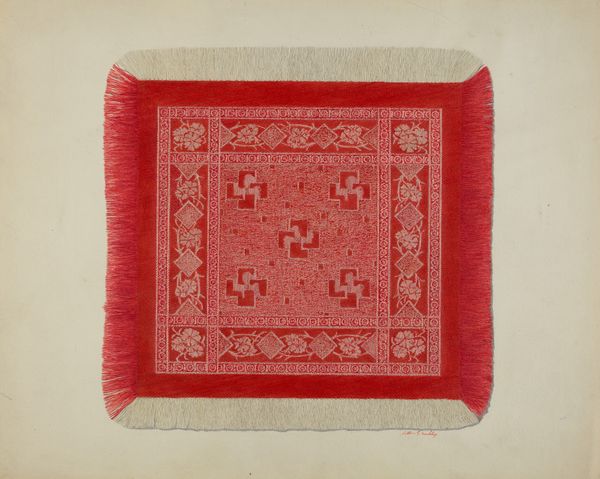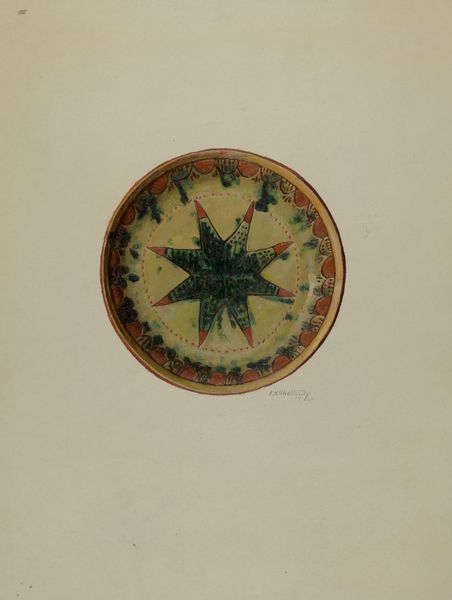
drawing
#
drawing
#
natural stone pattern
#
toned paper
#
sculpture
#
possibly oil pastel
#
tile art
#
carved into stone
#
acrylic on canvas
#
underpainting
#
pastel chalk drawing
#
watercolor
Dimensions: overall: 24.1 x 35.6 cm (9 1/2 x 14 in.)
Copyright: National Gallery of Art: CC0 1.0
Editor: We're looking at "Needlework," a drawing from 1937 by Clarence Secor. The intricate pattern gives me the impression of folk art, something almost like a woven rug design translated into a two-dimensional medium. What strikes you when you look at this piece? Curator: It's interesting that you call it folk art. Looking at it through a historical lens, I'm struck by how it embodies a fascination with craft that emerged in the 1930s, in reaction to industrialisation and social change. Consider how the Works Progress Administration (WPA) fostered crafts and sought to preserve American traditions. Does this drawing remind you of anything you’ve seen from that movement? Editor: That’s fascinating; I can see how the idea of preserving tradition connects. I guess it reminds me a bit of some Native American textile patterns I’ve seen, particularly the geometric designs and the central diamond motif. Curator: Precisely! This speaks to the broader dialogue surrounding cultural identity. In the 1930s, artists were actively re-evaluating and incorporating indigenous art forms into their work. How might this drawing, specifically its title and medium – suggesting "needlework" rendered in drawing – complicate our understanding of artistic labor and value? Editor: I see what you mean. The title almost implies a craft tradition, while the medium elevates it to the realm of "art," blurring those lines. It makes me wonder about the status of craft versus art during that time. Was Secor making a statement? Curator: Perhaps. Or, he could be reflecting a growing acceptance of craft as a legitimate art form, influenced by movements like the Bauhaus, which championed the integration of art, craft, and technology. The act of depiction itself changes how we consider these things, don't you agree? Editor: Definitely! Thinking about the social and cultural context really gives a depth to what might otherwise seem like a simple drawing. Thanks for that! Curator: My pleasure. Examining "Needlework" in the context of art history illuminates the complexities of artistic practice and the shifting value systems of the time.
Comments
No comments
Be the first to comment and join the conversation on the ultimate creative platform.
